Published by Rafe Blandford at 13:40 UTC, January 4th 2012
Summary:
2011 has been an eventful year for Symbian. The maturation of Qt and the Anna and Belle releases greatly improved performance and usability, easily the biggest year on year improvement in the platform's history. However, this was largely overshadowed by Nokia's February 11th announcement and the start of Nokia's switch to Windows Phone. Nonetheless, between numerous software releases and new hardware, such as the Nokia E6, X7, 701 and 603, there was still more than enough to keep us very busy. Here are the main stories, month by month.
January
Nokia released Big Screen, letting people get more out of the N8's and E7's HDMI-out functionality. Mobile Documents was released in an optimised version for Symbian^3. Skype acquired Qik, an early pioneer of live video streaming from your smartphone. Nokia Reader was released via Beta Labs, one of the first applications to use Nokia's push notifications service. Nokia Social was updated to version 1.3, with support for retweets added. Nokia announced its Q4 2010 results with Nokia's Symbian device shipments reaching their peak of 28.5 million units per quarter. Canalys, in a sign of things to come, suggested Android was overtaking Symbian as the leading platform (by device sales). Nokia signed partnership agreements with SINA and Tencent, underlining the importance of the Chinese market. We described ten things Nokia needed to fix in 2011, and by the end of the year the majority of them were.
February
The IEC published the microUSB charging standard (IEC62684), formalising the agreement for standard mobile phone chargers. Nokia Internet Radio was released for Symbian^3 and the Nokia Bike Charger accessory hit the shops. The Ovi Store client received its first update of the year. PR 1.1 hit the Nokia C7 (plus the Nokia N8 and C6-01). Ewan re-boxed the Nokia C5-03. The Nokia E7 started shipping and we started our review coverage. Stephen Elop's 'burning platform' memo was 'leaked' to the media. Opera Mobile broke the 100 million active mobile user barrier.
February 11th saw Nokia announce its switch to Windows Phone as its "primary smartphone platform", with Symbian becoming a "franchise platform". We reported live from the event, which marked the biggest change in Nokia's software strategy since it helped found the Symbian consortium in 1998. Nokia said it expected to "sell another 150 million Symbian devices over the next few years", would "continue to modernize the Symbian experience with a selective programme of enhancements" and would launch "more devices on the Symbian platform". While the events of February 11th did mean it was possible to see an end point for Symbian, it did not mean the platform was dead. Ultimately we felt that the necessity for a competitive and sustainable ecosystem was the vital factor in the decision to switch to Windows Phone for the long haul.
At MWC, Nokia gave details on forthcoming Symbian^3 software updates and hinted at new devices running on new hardware. The importance of Qt to Nokia was confirmed, it now being the primary development environment for Symbian, but with hints of something more to come. Ovi Maps 3.6 was formally released, as was Mobbler 2.1 and AudioBoo arrived on Symbian.
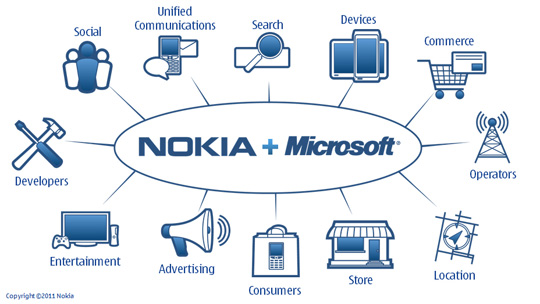
Nokia and Microsoft partnership
March
Layar, an AR browser, was released for Symbian, via the Ovi Store. Version 2.0 of SPB TV was released. The Q1 1.1 Beta SDK was released, giving developers the chance to get their teeth into Qt Quick. Digia signed an agreement with Nokia that saw it acquire the commercial licensing and professional services arm of Qt. The Ovi Store client was updated again. Ewan road tested the E7 at SXSW. Jason Hawkes shot the UK from the air, with a Nokia N8. The beta version of Nokia Software Updater for Mac was released. The Car Connectivity Consortium was announced to help drive Terminal Mode forward (in-car smartphone integration). Facebook acquired Snaptu. Opera Mobile 11 and Opera Mini 6 were released. PR 1.2 was released for the Nokia N8, C6-01 and C7-00. The first hints of Qt having a future in the Series 40 realm emerged. Nokia Sleeping Screen was released, allowing you to make better use of the AMOLED screens used by Symbian^3 devices, even when keylocked.
The end of March marked the official end point for the Symbian Foundation. Nokia opened its Symbian site and made most of the source code for the platform available. Symbian would no longer be an open source platform in the strict sense, but rather would be "open for business", with collaboration still being (theoretically) welcomed.
April
Ewan had fun flying a Parrot AR.Drone with Symbian^3 and Qt. Nokia Drop was released by Nokia Beta Labs. The Nokia E72's firmware was updated to version 54. Angry Birds Rio was released for Symbian^3 devices.
The Nokia X7, a design-led Symbian^3 smartphone, was announced. So too was the Nokia E6, a combined touchscreen and QWERTY keyboard device, following on from the popular E72, E71 and E61. Alongside these phones came the announcement of Symbian Anna, a usability and performance-focused software update for Symbian^3 devices.
Ovi Store reached the 5 million downloads a day mark. Ovi Maps 3.7 was released via Beta Labs and a 3D view was added to the web version of Ovi Maps. The announcement of Angry Birds Magic hinted at the NFC emphasis that would arrive later in the year. Nokia released its Q1 2011 figures, with Symbian device shipments falling to 24.2 million in the quarter, and with predictions of tough quarters ahead. Microsoft and Nokia finalised the defintive agreement for their partnership that had been announced in February. Nokia announced that it was cutting 4,000 jobs and was transferring Symbian software activities to Accenture. The 361 Degrees Podcast launched.
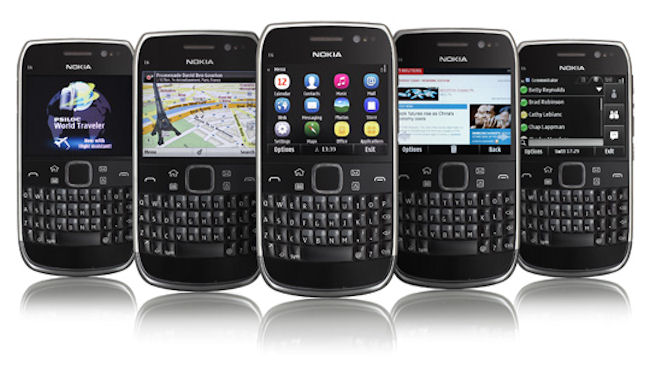
Nokia E6 running Symbian Anna
May
The long promised revamp to the Symbian development environment arrived in the form of the full release of the Qt 1.1 SDK, with Qt Mobility and Qt Quick taking centre stage, but we were frustrated by some of the teething problems. The Symbian^3 SDK 1.0 was also released. We carried out the ultimate EDoF challenge, having considered some of the compromises and explained EDoF's superior video capture. Nokia announced that its Chairman, Jorma Ollila, would step down in 2012. Microsoft announced plans to acquire Skype for $8.5 billion. LinkedIn released a client app for Symbian^3 devices. 6 new Symbian phones were announced in Japan. Nokia announced it would change its service branding from Ovi to Nokia, which led us to comment on the marketing message. The SYMBEOSE project was scrapped. The Nokia Oro, a premium material version of the C7, was announced. Stephen Elop said that he expected software updates to Symbian devices to continue to until at least 2016. The Nokia E6 and X7 started shipping. Nokia downgraded its outlook for Q2 2011. We noted that thin was in, but was not necessarily better.
June
Nokia Play To was released via Beta Labs, restoring DLNA functionality to Symbian^3, albeit in a more limited form than before. Stephen Elop used the D9 conference to quash rumours that Nokia was going to be acquired by Microsoft, he also used an Uplinq keynote to lay out his strategy for Nokia to a US audience. The third major update of the year to the Ovi Store client enabled application updates, a long requested feature. Apple agreed to pay a settlement and royalties to Nokia, ending the patent disputes between the two companies. The Nokia T7-00 and 702T, both Symbian^3 devices, were announced for the Chinese market (TD-SCDMA). Forum Nokia switched its branding to Nokia Developer. Nokia closed many of its branded online stores. A pink version of the Nokia N8 was unveiled. We commenced our review coverage of the Nokia X7 and considered the state of Symbian and The Cloud. At Nokia Connection, in Singapore, several NFC enabled accessories were announced, including the Nokia Play 360. The Nokia N9, a MeeGo device, was announced, the remnant of Nokia's original plan to gradually replace Symbian devices with MeeGo devices at the high end. Ovi Store hit the 6 million downloads a day mark. Nokia announced that its NAVTEQ and social location (remains of Ovi services) business operations would be combined, the new Location and Commerce business unit would be headed by Michael Halbherr. The forthcoming availability of Maps and Browser updates (via new firmware) for many S60 3rd Edition and S60 5th Edition phones was announced.
July
We published the first part of our E6 review and talked about the power implications of AMOLED screens. Synchronica acquired Nokia's operator messaging business, marking the end of another piece of Nokia's Ovi strategy. The N97 mini's firmware was updated to v30, bringing the promised updates to the browser and improved performance. Qt Quick components 1.0 for Symbian was released, allowing for quicker and easier UI creation. Ovi Maps was renamed to Nokia Maps and a new beta version (3.8) was released through Beta Labs. Nokia released developer UI guidelines, which hinted at a big UI update for the Symbian^3 platform. Nokia Live View, an augmented reality browser, was released in beta. Nokia announced its Q2 2011 results, with an operating loss of €487 million and Nokia Symbian device shipments falling sharply to 16.7 million in the quarter. Ovi Store passed the 7 million downloads a day mark. NFC Hub opened, signalling the beginning of the NFC push.
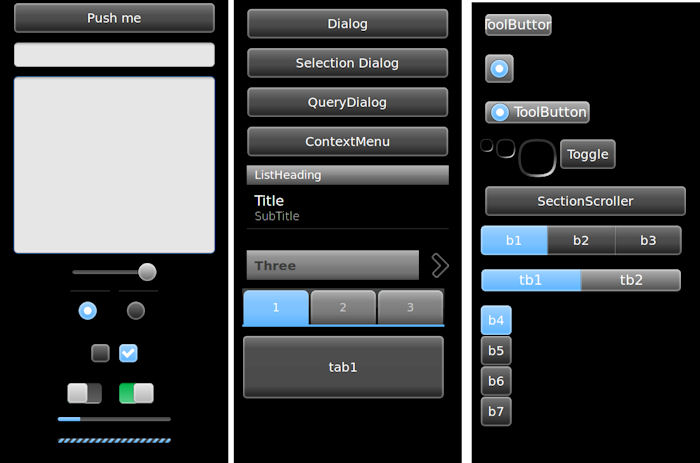
Qt Quick Components
August
The Nokia 500 was announced, the cheapest ever Symbian device, at just €150; it also featured an all new hardware platform. Quickoffice was updated to version 7, adding support for access to cloud storage services. Web based access to Ovi Calendar was closed, but the back-up service remained operational. Gartner calculated Symbian's Q2 2011 market-share at 22%, with 23.8 million devices sold (suggesting part of Nokia Symbian sales decline was due to inventory management). Ovi Store passed the 9 million downloads a day mark. The Symbian Anna roll out started (software update) for the Nokia N8, C7, E7 and C6-01. It would take another 4 months for it to be completed. An update to the N8's Camera application was released in beta.
Nokia announced it was changing its naming scheme to a 3 number system. The Nokia 701, a follow up to the C7-00, was announced; it boasted Nokia's brightest ever screen. The Nokia 600, Nokia's loudest ever smartphone, also made its debut. So too did the Nokia 700, Nokia's smallest ever smartphone. All three of the new devices ran on 1GHz processors and featured NFC connectivity and EDoF cameras. Symbian Belle, delivering an updated user interface, was announced. The new Belle UI was the biggest ever visual change to the look and feel of Symbian^3/S60/Series 60.
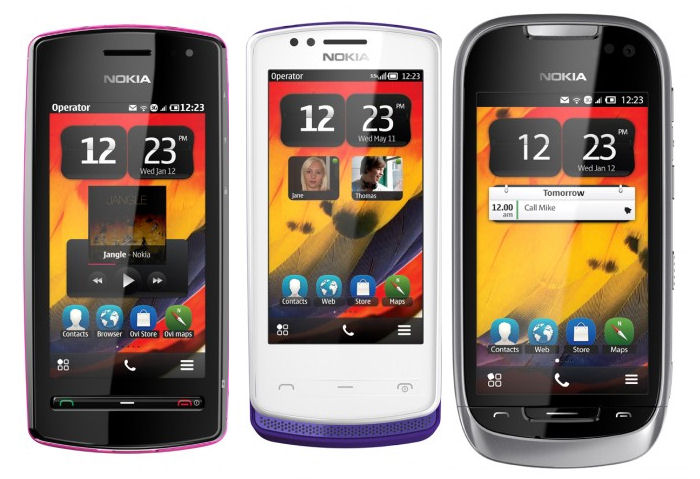
Nokia 600, 700 and 701, running Nokia Belle
September
Nokia and Microsoft announced the forthcoming availability of Microsoft Business Apps for Symbian Belle. The first phase would see new applications (OneNote, PowerPoint Broadcaster, Document Connection) and some updates (Lync 2010 and Exchange Active Sync), while phase 2 would see a complete Office solution (Word, Excel, PowerPoint) that would replace Quickoffice as the default Office app on Nokia's Symbian phones. The FM transmitter feature was renamed to the more obvious Play via Radio. The Qt Project was announced, opening up the governance, road-mapping and release process of Qt. Nokia Car Mode was announced, based on the new MirrorLink standard (previously Terminal Mode), which allowed deeper integration between smartphones and in-car systems. Swype for Symbian was updated to version 2.0. Henry Tirri was appointed as Nokia's CTO (and joined the leadership team), following the departure of Rich Green. The Ovi de-branding process reached the Ovi Store client and a QML powered version of the store was released in beta form. Nokia announced further job losses and the closures of its Romanian factory. The transfer of Symbian software development and support activities to Accenture was completed. The Nokia 700 and 701 started shipping.
October
Swype was acquired by Nuance. Nokia Universal Search was made available as a public beta. Ovi Store completed its re-brand to Nokia Store. The Nokia 603, offering a very decent specification for a relatively low cost, was launched. Alongside the 603, the Nokia Luna, a Bluetooth headset with a unique form factor, was also announced. Nokia Suite 3.2 beta was made available, marking one of the last major Ovi to Nokia brand changeovers. The Vertu Constellation, a luxury smartphone based on the Nokia C7, was announced and priced at between £4,000 and £10,000. Nokia announced its Q3 2011 results, with an operating loss of €71 million and smartphone sales of 16.7 million in the quarter, suggesting the company was on the road to recovery. We published the first part of our Nokia 700 review, looked at the N8 one year on and offered a primer on NFC.
Our sister site All About Windows Phone was launched on October 24th and, a few days later, at Nokia World, Nokia announced its first Windows Phone handsets. We took the opportunity to remind our audience that AAS would continue to cover the Symbian platform. At Nokia World, an accessory partnership with Monster was announced, a new beta of Nokia Maps with public transport options were unveiled and we saw lots of Symbian^3 hardware running Symbian Belle.
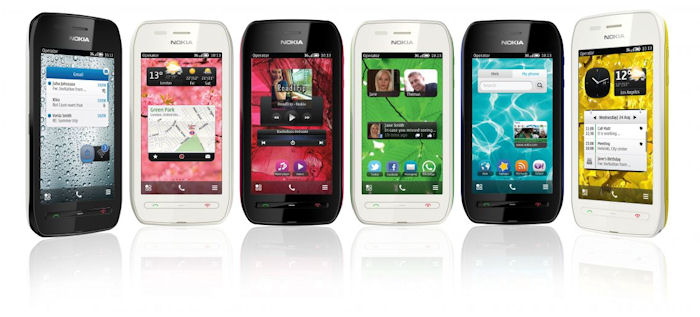
November
Following on from Nokia World, we published articles on Nokia Director's Cut, hydrophobic materials and flexible screens. Updates to Nokia Suite and the Nokia Store client were released. Nokia backed free WiFi in London. The Nokia 600 was effectively cancelled, in part because it was too close to the Nokia 603. We previewed the upcoming Microsoft Office apps for Symbian Belle. Nokia Maps 3.8 was formally released, following a long beta period. The Nokia E72's firmware was updated to v81 and the X6's to v40. We compared IPS TFT (701) screen tech against AMOLED (C7) and talked about the latest updates to Nokia's EDoF technology. The Qt 4.7.4 bundle was released for Symbian, it included important updated for Qt Mobility and Qt Quick Components for Symbian. The BL-5K battery was updated, as present in the Nokia 701, with an increased capacity. We published the first part of our Nokia 701 review. Nokia reminded everyone that it had been innovating for 25 years as Nokia Research Centre celebrated its birthday.
December
The Nokia 603 started shipping. We talked about a film shot entirely on the Nokia N8. Nokia Live View was updated, as was the QML version of the Nokia Store and Nokia Pulse. We took our total podcast episodes published over the 250 mark. Nokia quietly switched the name of Symbian's UI from Symbian Belle to Nokia Belle and announced that Belle would arrive on existing handsets in early 2012. Nokia Suite 3.3 was released in Beta. Nokia launched the 801T, a Symbian^3 handset for the Chinese TD-SCDMA market. Nokia Car Mode and Nokia Play To were released to Belle handsets via the Software Updater and via Nokia Store. StatCounter figures suggest Symbian remained top in global mobile browser use.
blog comments powered by Disqus
No hay comentarios:
Publicar un comentario